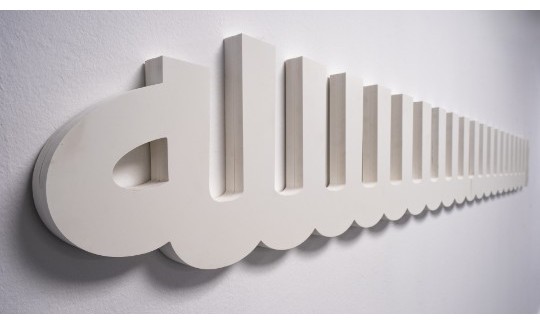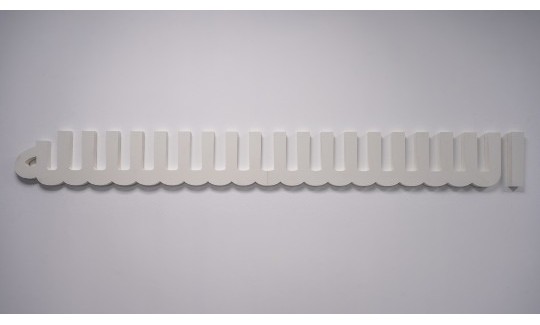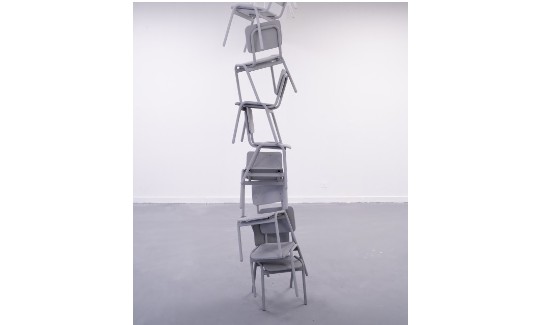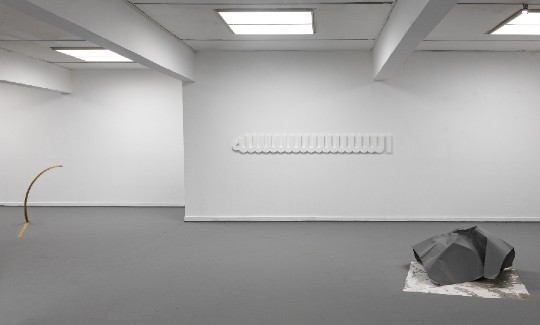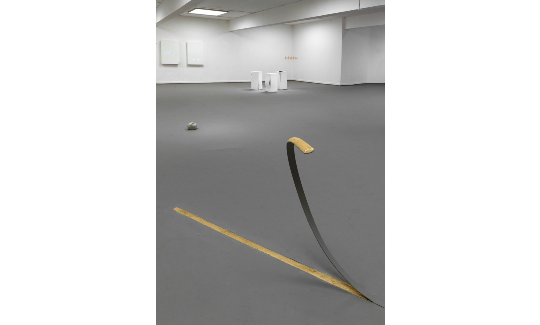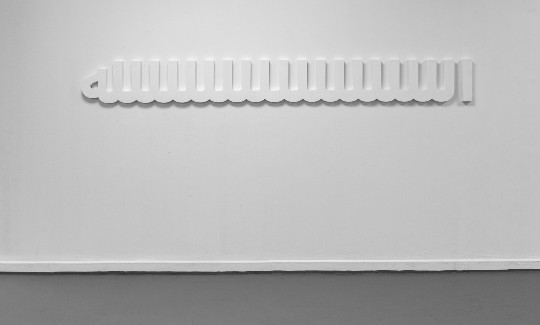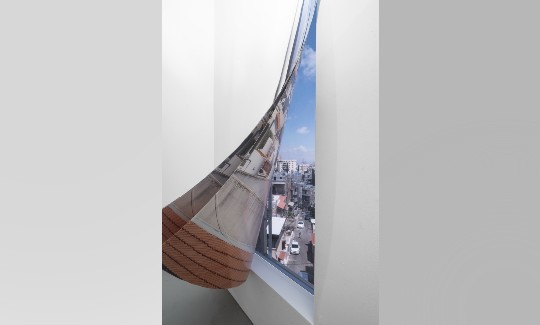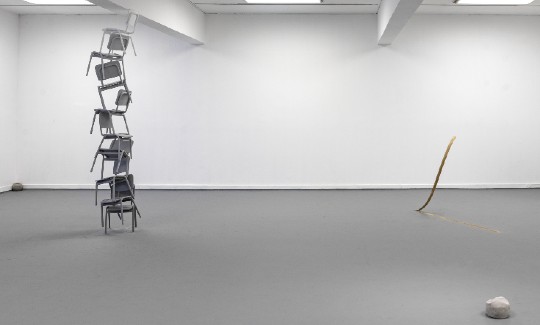
Nardeen Srouji opens the windows and introduces a storm into the museum. The wind reveals historical layers of the building, inaugurated in 1930 as a girls' school of the Anglican Church, which was open to girls from all religious groups in the city, and its language of instruction was predominantly Arabic. Performing a series of interventions in the space, Srouji digs into the place’s past, uncovering echoes from the British Mandate period in the form of a tower of chairs about to collapse, texts in Arabic, and the sound of footsteps in the stairwell. The colorful past bursts forth through the gray concrete floor, springing up between the cracks that opened in white museum pedestals.
The museum is Srouji's playground. Using a wide variety of materials and media, theatrical staging, and sculptural actions that challenge the laws of physics, she plays with truth and fiction. Like a superhero who has the power to stop time, at the height of the storm she freezes a moment when the place seems to be in the process of dissolving or evolving. Via the game, Srouji explores the place's past as a church school and its present as a museum of art, proposing options for formation of a different future.
Nardeen Srouji
b. 1980, Nazareth
Live in Haifa
We thank the supporters whose generosity has made the exhibition possible: Evi Musher-Shechter, New York; Rivka Saker, Israel; Israel Lottery Council for Culture and Arts; Art Lane Fund



